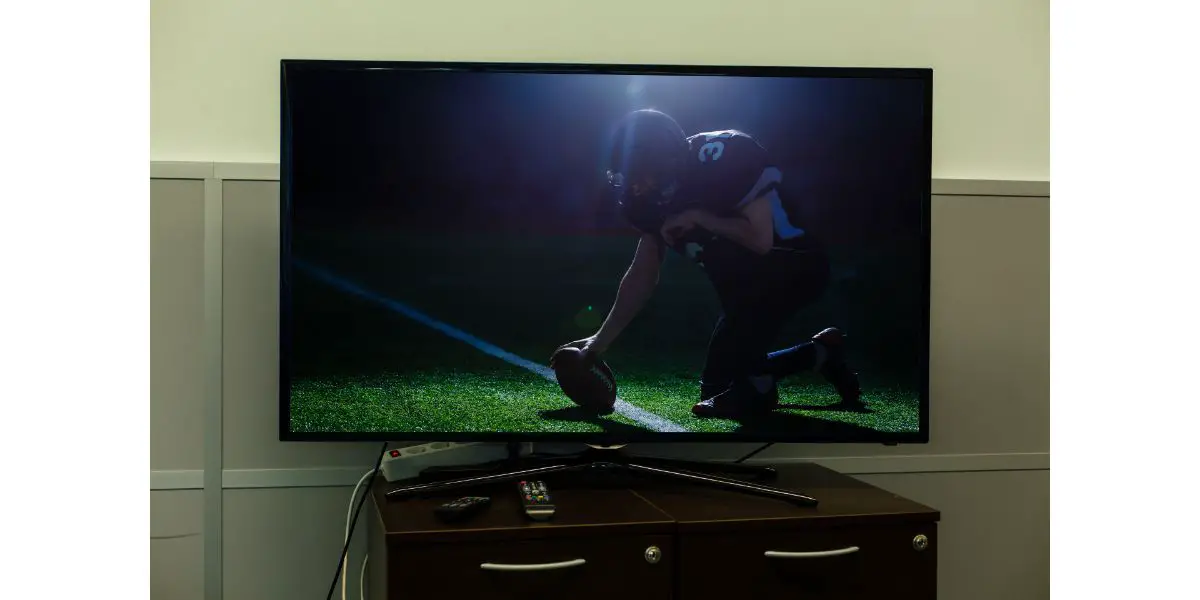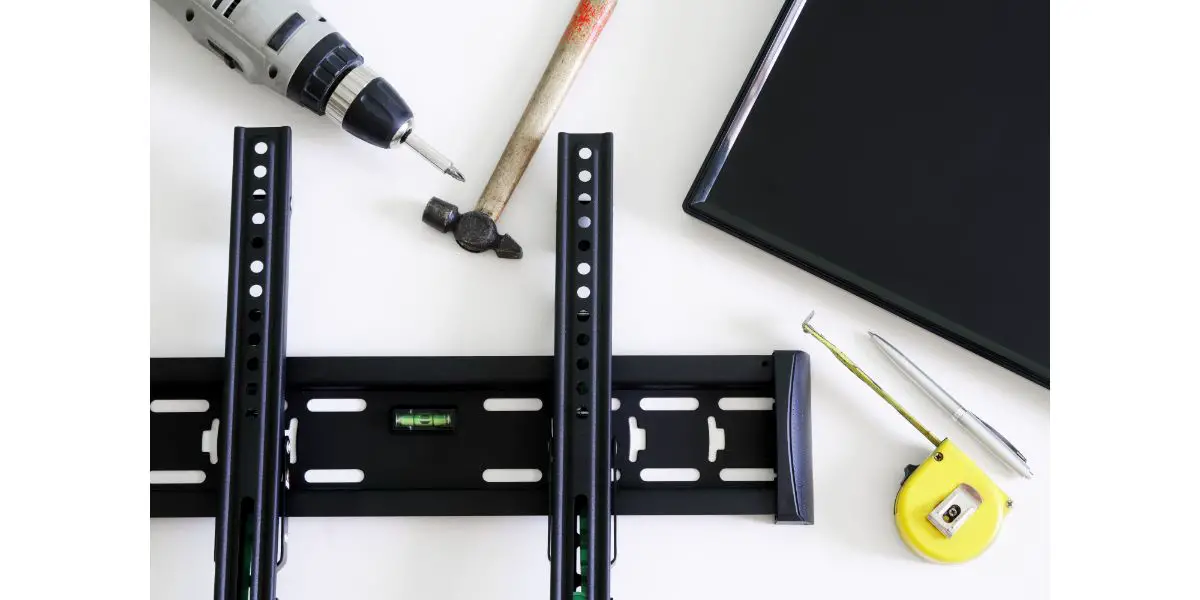Disclaimer: This post may contain affiliate links, meaning we get a small commission if you make a purchase through our links, at no cost to you. For more information, please visit our Disclaimer Page.
Whether you’re setting up your TV or just wondering if the setup is supposed to look the way it does, we’re here for you.
Almost all modern TVs are made to be bigger than the stand, but the stand shouldn’t be wider than the furniture it’s mounted on. While a longer stand may be ok, a wider one causes the TV to be unstable and potentially fall over.
Table of Contents
TV vs. Stand vs. Furniture
There are three parts to differentiate before moving on: the TV, its stand, and the furniture it all sits on. When searching for the term “TV stand” you may get images of both furniture stands and prop stands that lift the TV.
Most TVs nowadays either come with a stand attached or offer the chance to buy one for that model. For this article, we won’t discuss wall-mounted TVs, although the wall mounts for TVs are also smaller than the TVs themselves.
Instead, we will focus on TV stands that are meant to be placed on another surface, like a long piece of furniture meant for holding your TV, cable box, and other consoles. These are usually plastic extensions on the bottom of the TV that may have two legs or another shape that prop up the TV so that it doesn’t touch the furniture itself.
TVs Are Usually Bigger Than Their Stands
Nowadays, virtually all TVs are flatscreens and, if they aren’t, they won’t have or need a stand to prop them up. These flatscreens are thin and long, so they usually extend way past the stand to the right and left.
To keep the TV stable, the stands are centered and focus on concentrating the TV’s weight at this focal point. The stand should be wider than the TV, even if by just a few centimeters or inches.
You’ll usually find stands with two legs that either extend to the sides or toward the back of the TV. The stand may also be a flat board with a trunk that leads up to the TV and connects to the back, similar to the look of a traditional desktop computer screen.
Furniture Should Be Bigger Than Stands
If your TV isn’t mounted, you’re going to need to set it on a surface. Keep these three points in mind:
- It’s ok if your TV is longer than your furniture piece, so long as it’s built to hold the weight of your TV.
- Your TV stand should not be longer than your furniture piece or your TV could fall.
- Your TV stand may be wider than your furniture and remain stable, but you still risk it getting wobbly.
Since TVs are so thin, it would be nearly impossible to find a piece of furniture that isn’t wider than the TV. As long as it can support the weight of the TV and stand, the concern lies more in comparison to the stand.
Assuming you go the traditional route and want to put it on a piece of furniture in your living room or bedroom, it’s important to select a piece of furniture that is bigger than your TV stand.
If your TV stand has legs that go off to the side, a smaller piece of furniture will make your TV wobbly and in danger of falling.
If your TV stand has legs that go front to back or a flat board base, you’ll have more stability but should still look for furniture that offers enough space to set it down.
Exceptions
There are a few smaller pieces of furniture that are created to hold TVs and don’t meet the suggestions above. These are usually narrow and tall furniture stands that connect directly to the back of the TV. So long as it was created to hold a TV and can withstand the weight, you should be OK.
What to Do When Furniture Is Too Small
If you have a TV balancing precariously on a piece of furniture that is too small, you may be able to remedy it, at least for now.
First, double-check the weight limits on the furniture. If it’s in the clear, consider its placement in the room. Since your TV isn’t fully secure on the furniture’s surface, you’ll want it somewhere it won’t be touched or moved.
If you an extra layer of protection, you can buy TV straps or even weights you could place on the base of the stand to hold it in place.
The back of your TV should face a wall for more stability. Make sure the furniture isn’t somewhere you brush past often or you risk your precious technology plummeting to its untimely death.
Choosing the Right TV Stand and Furniture
If you’re in the market for a new TV stand and furniture, you have a few options and aspects to consider.
- wall-mounted or on a piece of furniture
- the size and weight of your TV
- space for additional consoles, cable boxes, routers, etc.
- the space in your home
Wall-Mount or Prop Stand
The 2020s have made wall-mounted TVs – especially smart TVs – all the rage. With proper installation, these mounts can hold between 20 and 175 pounds depending on the make and model.
It’s best to attach these mounts to the studs behind drywall, but many can also be attached to the hollow space. Be sure the installation is done by a professional.
If you have the space and furniture piece for it, a prop stand will also display your TV professionally, allowing easier access for cables, cleaning, and moving around. You also avoid drilling into your wall and it’s much quicker and easier to set up.
Final Thoughts
You can mount your TV on a smaller stand – this is usually the case – but the furniture holding your TV should be bigger than the stand. This is especially important when it comes to length, as having your stand’s legs teetering off a table is cause for a fallen and broken TV.
If your TV stand is a bit wider than the table, you may be able to manage but remain cautious about touching the furniture or TV to prevent the latter from falling.


